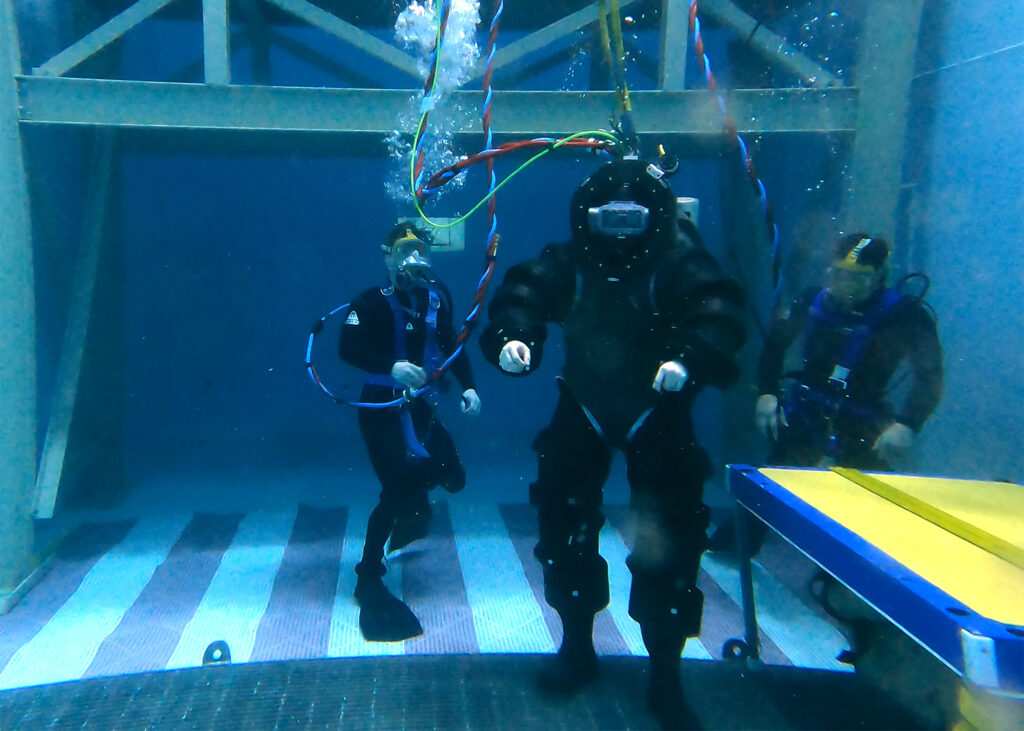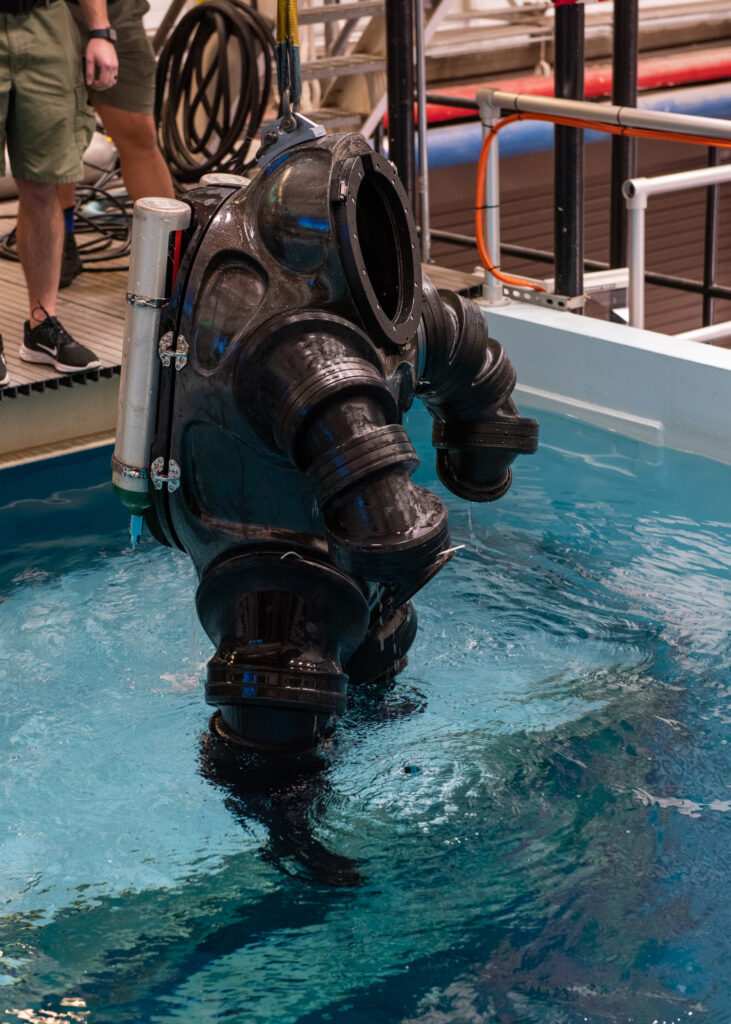The U.S. Navy is designing a new “Iron Man” diving suit to increase the safety and productivity of its underwater divers.
The Deep Sea Expeditionary with No Decompression system, also known as DSEND, would “enhance a diver’s range of motion while providing the added benefit of allowing the user to swim independent of propulsion systems,” according to the Naval Surface Warfare Center Panama City Division.

Military Times reported that the new suit is form-fitting with flexible and rotating joints to maximize the mobility of divers and retain steady internal pressure in the atmospheric suit.
“It is a hard suit that the diver crawls into,” Naval Sea Systems Command diving systems program manager and a retired Navy master diver, Paul McMurtrie, said. “A good depiction would be an Iron Man suit for a diver underwater.”
Navy divers are responsible for underwater rescues, underwater salvage of aircraft and vessels, maintenance on Navy ship hulls, recovering equipment, and explosive ordnance disposal, according to Military Times.
Currently, the Navy faces a challenge as divers are forced to deal with high water pressure levels in the ocean, which often results in divers struggling with decompression sickness.
In order for Navy divers to complete 20 to 25 minutes worth of underwater work deep in the ocean, divers are required to use a saturation system that is pressurized with gas to match the pressure of the water.
After completing an underwater work session, the divers have to slowly ascend with regular stops in order to prevent nitrogen from creating bubbles in their blood that cause decompression sickness, as well as other injuries from underwater exposure.

Once the Navy divers reach the surface after an underwater work session, McMurtrie told the Military times that the divers are required to spend 90 minutes in a decompression chamber.
The “Iron Man” diving suit would theoretically eliminate the need for Navy divers to gradually ascend to the surface of the water at the end of each work session due to the consistent pressure level that the suit provides.
As a result, the suit would allow divers to remain underwater longer.
“With the suit, we can drop the guy down to the bottom, and he can work for up to six hours, and then come right back up,” McMurtrie said. “He gets out of the suit. Next guy jumps in. Boom. He’s back down for another six hours.”
READ MORE: Did Navy spill radioactive material from secret lab?
McMurtrie explained that a typical job that might take “mixed-gas divers” anywhere from two to three weeks to accomplish could be completed in one or two days with the implementation of the new “Iron Man” suits.
“The suit could knock it out in a day or two with a much smaller team, a smaller footprint and in the safety of not having to undergo decompression sickness,” McMurtrie said.
Dr. Sandra Chapman, a program officer for the Office of Naval Research’s warfighter performance department, told Navy Times that the DSEND system is similar to a “one-person submarine.”
However, unlike a normal submarine, the DSEND system would allow Navy personnel to “operate like a diver” due to the “form-fitted” nature of the “Iron Man” suit.
Over the past year, the DSEND system has already demonstrated its ability to allow divers to maneuver underwater, salvage material, and perform rescue operations.
“These are all things that the current atmospheric dive suits could never do,” McMurtrie said. “So, what we’ve demonstrated in these demonstrations is that the suit can do just about anything a wet diver could do — could perform the same way.”



